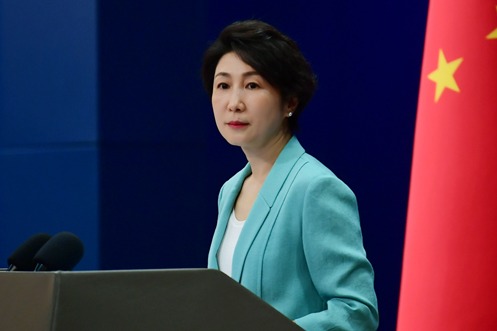Innovation a common theme in China, US strategic approaches

Is there any similarity between the speech by President Xi Jinping at a crucial party congress on Oct 18, and the National Security Strategy launched by US President Donald Trump on Dec 18?
The significance of the two documents is not symmetrical. After all, Xi's keynote address at the 19th National Congress of the Communist Party of China charts the course for the country's future development, while Trump's congressionally mandated paper outlines his administration's appraisal of the current national security interests and the ways to secure them.
After reading the two presidential documents, I've found a striking resemblance in them: the unprecedented emphasis laid on innovation, an area I believe the two countries have as much, if not more, to cooperateon rather than compete.
Trump referenced innovation at least 30 times in his first national security strategy, more than double the occurrences in the 2015 strategy by his predecessor Barack Obama. It occurs more than 50 times in Xi's landmark work report at the Party congress.
While Trump stresses that innovation has been key to US national greatness and indispensable to American prosperity and power, Xi emphasizes that innovation is the primary driving force behind development and the strategic underpinning for building a modernized economy.
Both presidents vow to maintain and maximize their country's innovation and technological
edge by aiming for the frontiers of science and technology and nurturing and retaining inventors and innovators.
Specifically, Trump and Xi pledge to prioritize innovation in aerospace and emerging technologies that are critical to economic growth and security, such as modern engineering technologies.
In addition, Trump's call to spur innovation in new materials, new energy, artificial intelligence and biomedicine is identical to those specified in the Government Work Report delivered by Premier Li Keqiang at the annual national legislative session early this year.
Though they have placed similar importance on innovation, the strength in ingenuity between the two is huge - at least from the perspective of research and development expenditure and human resources.
The US is by far the world's biggest spender: It poured 2.8 percent of its gross domestic product into R&D in 2015, when China's spending was 2.1 percent, according to the 2015 UIS Innovation Data Collection, the latest survey released by the UNESCO Institute of Statistics in April.
In terms of human resources, the US had 4,232 researchers per 1 million inhabitants in 2014, while China had only 1,113, according to the UNESCO statistics.
With its increasing economic clout, it is only a matter of time for China to catch up on R&D expenditures. China had achieved an astonishing average annual growth rate of 18.3 percent in R&D spending, the UNESCO report said.
But in the field of R&D human resources, China has a long way to go to get closer to the US, which boasts the world's best strategy in recruiting and retaining talent, as well as cultivating world-class scientists and technologists.
That is the key to addressing a glaring deficiency in China, where about 72 percent of innovation-active firms rated the lack of qualified personnel as a highly important barrier to innovation, according to the UNESCO Institute of Statistics' April report.
The same level of importance being put on innovation by Chinese and US presidents means that innovationalso could be an important area of cooperation between the two countries.
Already, both nations have committed to advancing the renewal of the historic 1970s Science & Technology Agreement while strengthening joint scientific research, and exploiting ways for province-state cooperation on technological innovation, according to an action plan issued after the first US-China Social and Cultural Dialogue in late September.
The dialogue is one of the four cabinet-level dialogues agreed to by the two presidents at their Mar-a-Lago meeting in April.
Under the action plan, Beijing and Washington also encourage their businesses to cooperate in areas of innovation and entrepreneurship, and their technology-driven think tanks to exchange ideas.
Contact the writer at huanxinzhao@chinadailyusa.com
































